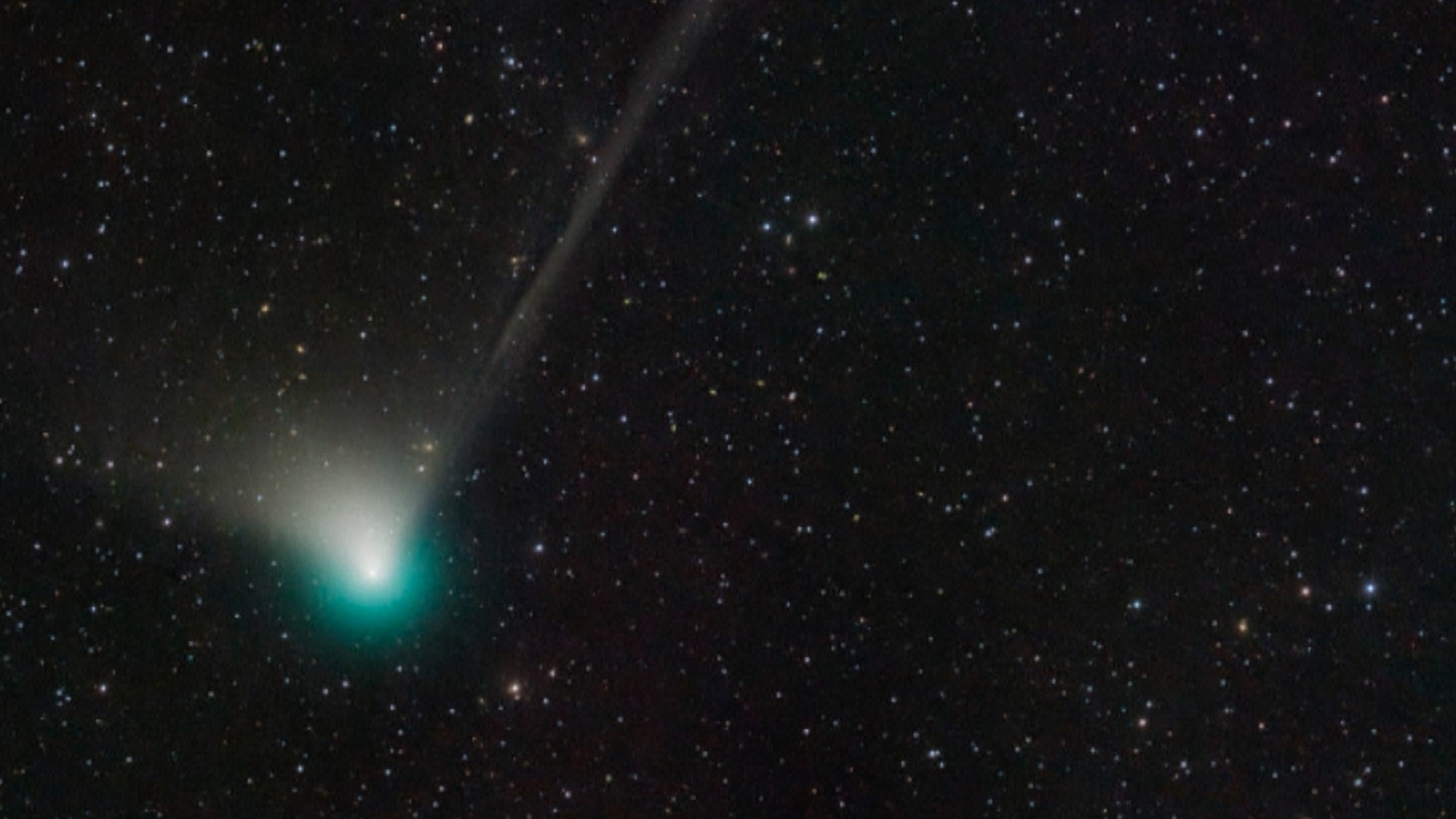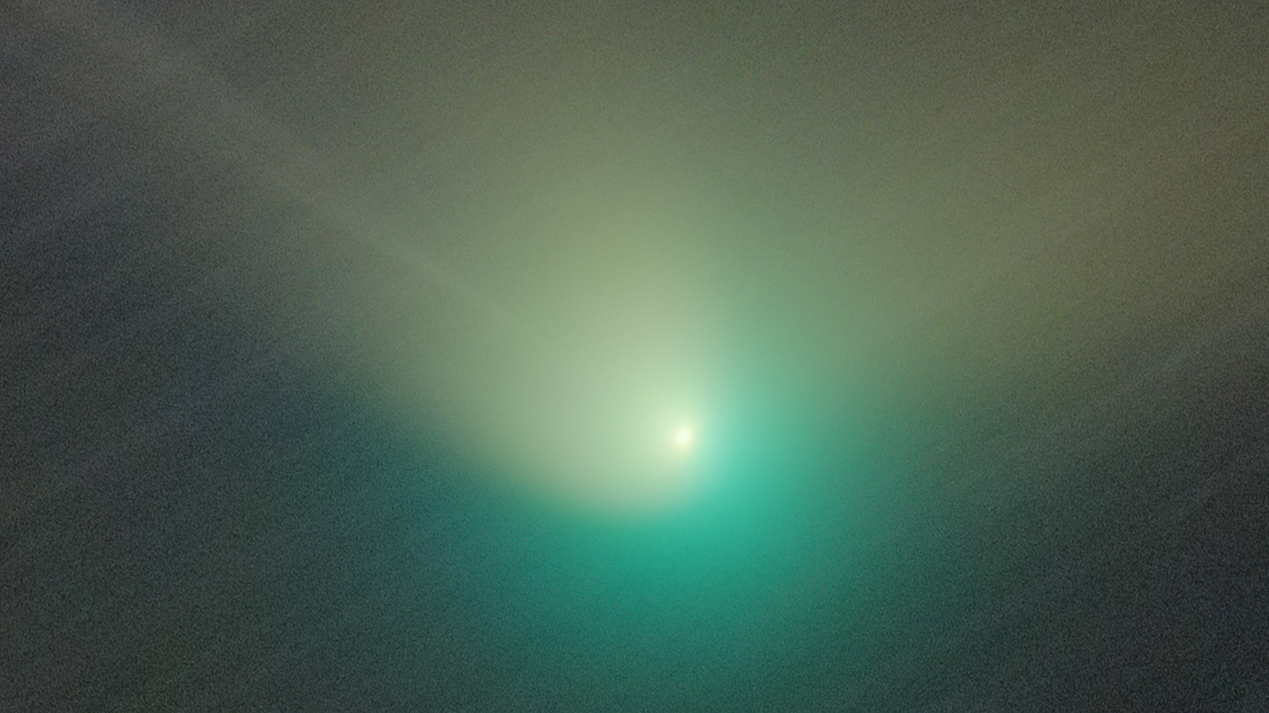00:46

A green comet is making its closest approach to Earth and is likely to be visible to the naked eye under the right conditions.
The comet, with a cumbersome name C/2022 E3 (ZTF), was first seen last March by astronomers using the Zwicky Transient Facility, a wide field camera at Caltech's Palomar Observatory.
It has a long orbital period of 50,000 years according to NASA's Jet Propulsion Laboratory (NASA JPL) and is traveling closest to Earth on the night of February 1 to February 2 at a distance of around 42 million kilometers.
With the assistance of binoculars and small telescopes, the comet has become visible in the northern sky since its closest approach to the sun, its perihelion, on January 12.

An observation team in Beijing captures the "green comet" C/2022 E3 (ZTF) on January 29, 2023. /Beijing Planetarium
An observation team in Beijing captures the "green comet" C/2022 E3 (ZTF) on January 29, 2023. /Beijing Planetarium
To observers on the northern hemisphere, just look in the northern skies just after sunset and try to catch the comet's gorgeous green tail caused by chemical particles, especially diatomic carbon and cyanogen, in its gas cloud, or coma.
According to Space.com, C/2022 E3 (ZTF) will become visible at around 2349 GMT on February 1 when it is at 49 degrees over the northern horizon and will climb to its highest point in the sky, 58 degrees over the northern horizon, at around 0246 GMT.
After the comet's perigee, the comet will still be visible in early February but will gradually dim as it travels southward and passes through the Auriga constellation followed by its shine near Mars in the Taurus constellation. Luckily, skygazers in the southern hemisphere will have a good chance of spotting it then.
Here are some general tips for catching this comet:
1. Get away from city light and find a safe dark place. The comet's magnitude is just dimly visible to the naked eye but most viewers will need an instrument.
2. Look for the Polaris, or the North Star. The comet will be just above the Polaris at its perigee.